Chinese wedding customs in Singapore
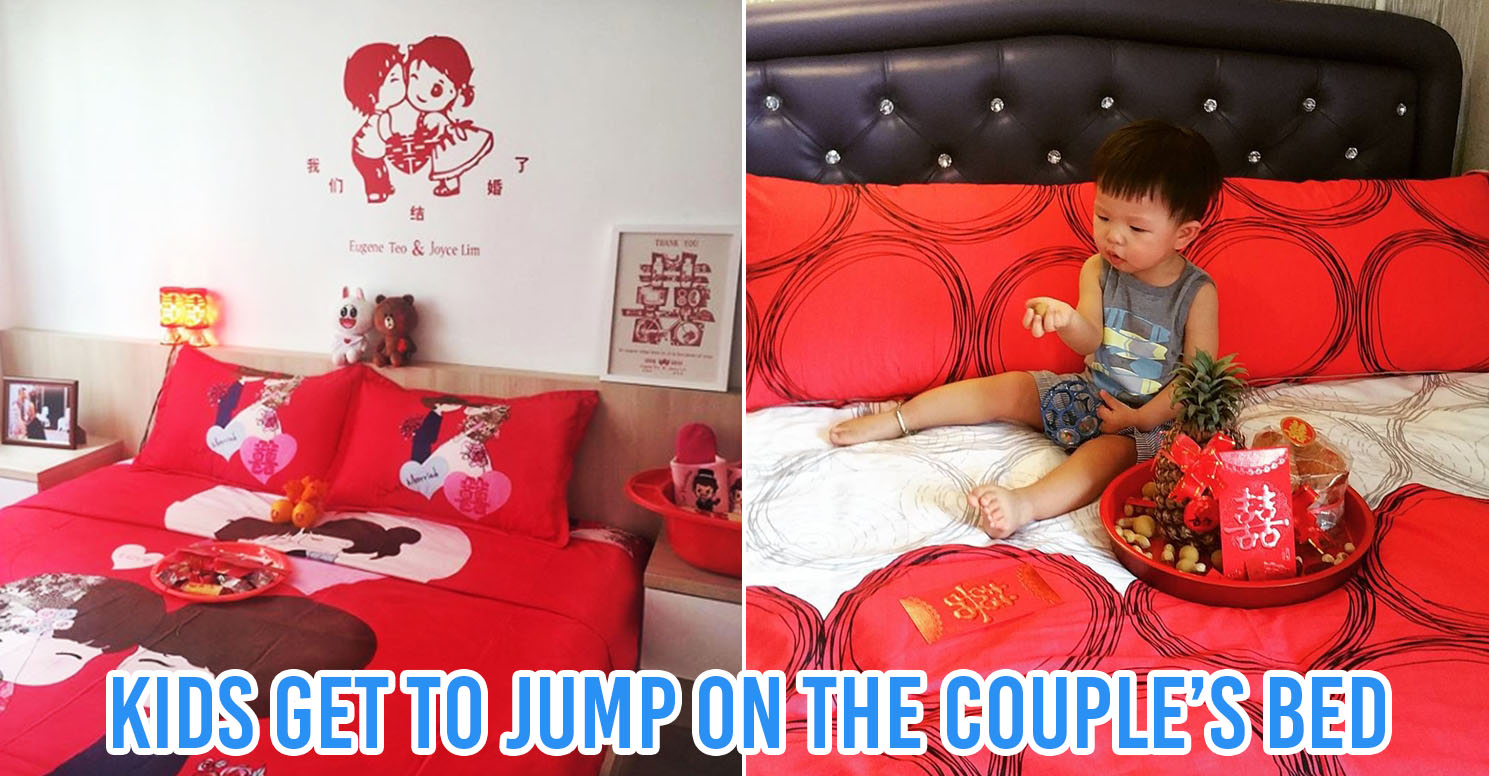 Image adapted from: @joyyceeebb, @brenzwen
Image adapted from: @joyyceeebb, @brenzwen
As a little kid, I always found myself intrigued as I flipped through wedding photo albums of my family members. Brimming with pictures of relatives holding large baskets filled with gifts, kneeling while serving tea to the elders, and strikingly red wedding dresses, I wondered why a wedding had so many mafan steps to it.
From crazy challenges set by bridesmaids and the Guo Da Li ceremony, here are Chinese wedding traditions commonly seen in Singapore and their significance explained.
Read our other articles on cultural and religious customs in Singapore:
- Malay wedding customs
- Religious home blessing customs
- Religious funeral customs
- Ash Wednesday, Good Friday and Easter facts
1. Auspicious dates are specially picked based on the couple’s birth timings

Image credit: Daper
When it comes to our favourite romcoms, large romantic gestures like spontaneous runaway weddings are commonplace. Well, spur of the moment ceremonies are out of the question for Chinese weddings – a specific auspicious date and timing are picked as these are believed to kickstart a blissful marriage.
Known as the Chinese Almanac (通书), the random words and animals on our grandparents’ old tear-off calendars are used as a general guide. However, a more personalised wedding date looks at the pair’s unique 8 Characters (八字), which includes their specific birth date and time.
Be it picked by a Feng Shui master or a Chinese monk, an even-numbered date and month is always preferred, while the 7th lunar month or Hungry Ghost Festival period is a huge no-no. Nobody wants to get married with surprise guests, especially if they’re spirits!
2. Betrothal gifts like a whole roast pig are given by the groom’s family to the bride’s during Guo Da Li
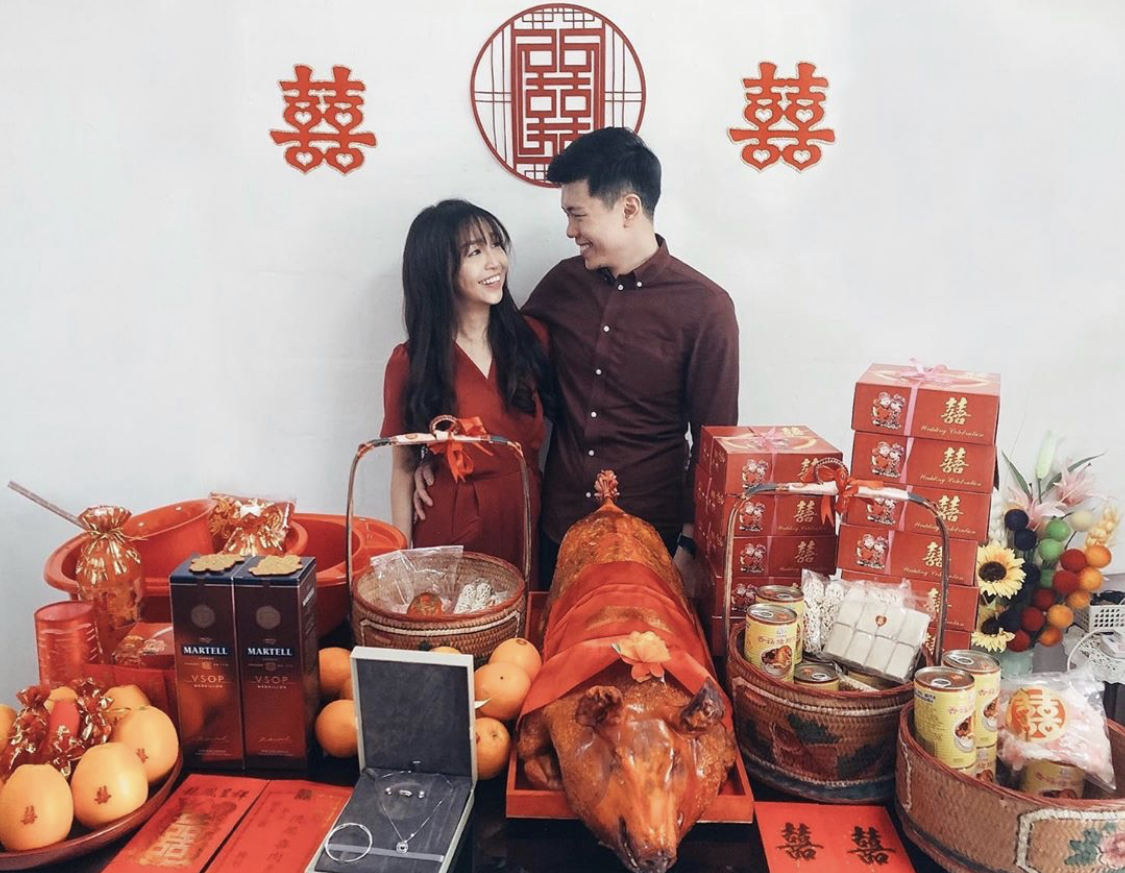
Image credit: @sophiahrx
If you think that picking an engagement ring is the biggest part of pre-wedding preparations, wait till you see the overflowing betrothal gift baskets at every betrothal ceremony, also known as Guo Da Li (过大礼). Symbolising the groom’s promise to marry and stand by his bride for the rest of their lives, betrothal gifts are brought to the bride’s family home by the groom’s family 2 to 4 weeks before the wedding.
As good things come in pairs, commonly sighted items include 8 oranges, with 8 being an auspicious number that means wealth in Chinese culture. Red dates are also given to symbolise fertility, as well as traditional wedding cakes and goodies that differ depending on dialect. While a Teochew bride will receive canned pig’s trotters, a Cantonese bride requires an entire roast pig!

Image credit: @nicolemakk
Just like how a marriage is a two-way street, the betrothal ceremony is only complete when the bride’s family accepts the gifts and groom into the family as their son-in-law. They will then bestow a dowry in return to the groom’s family and bless the couple with happiness. This often includes Chinese steam cakes that symbolise prosperity and a tea set that’ll be used in the upcoming tea ceremony.
3. Kids get to jump on the couple’s new bed to bless them with many offspring

Image credit: @brenzwen
We’ve all been scolded countless times by our parents for jumping on the bed as kids. But jumping and rolling on the couple’s new bed comes with no consequences for little kiddos – only on the wedding day. This symbolises blessings to the newlywed for many future kids of their own.
Traditionally held up to a week before the wedding, the bed-setting ceremony known as An Chuang (安床) is done by a woman with many children and grandchildren. While it’s usually the couple’s relative like an aunt, an alternative is to outsource this service and pay for it if the couple doesn’t have any young nieces or nephews.

Image credit: @joyyceeebb
The new matrimonial bed will be covered in a red bedspread with new pillow cases, before an extensive list of items including red packets, oranges, lotus seeds, pomegranate leaves, peanuts, dried longans and red dates are scattered and left till the wedding night. These items all come together to symbolise an overflowing bed of blessings.
4. The couple’s hair is combed with 4 strokes and tang yuan is eaten afterwards
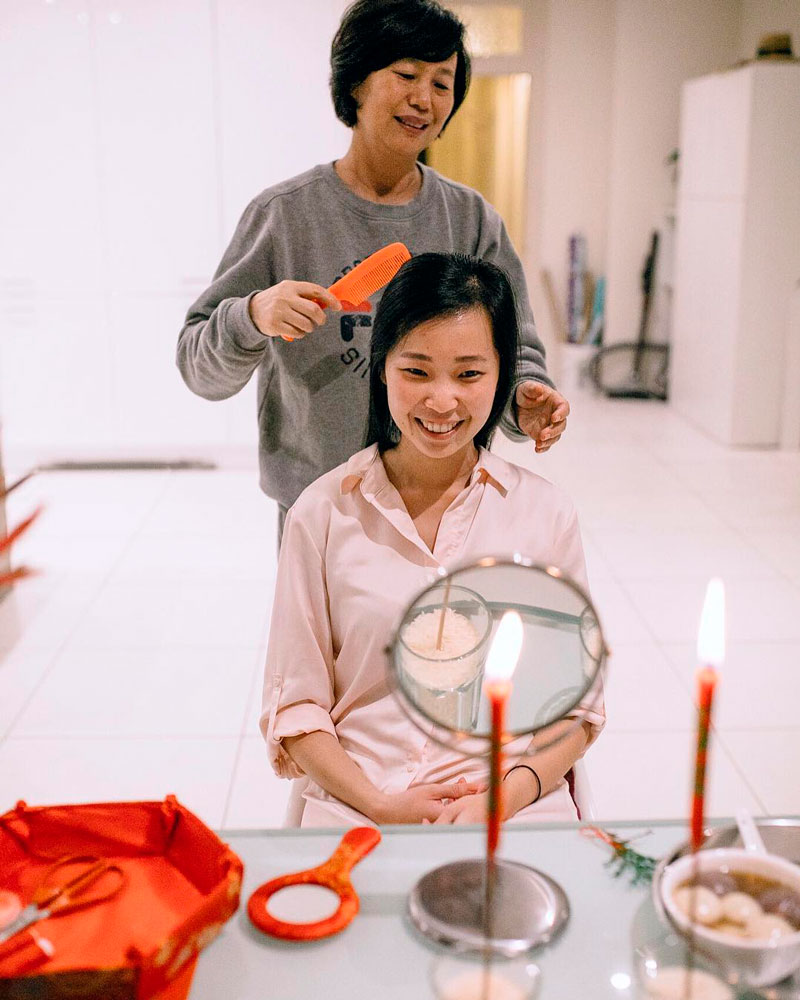
Image credit: @clarissalum
Unlike the hurried hair-brushing in the morning when we’re running late, the hair combing ceremony known as Shang Tou (上头) is done precisely with 4 meaningful strokes. Conducted on the night before the wedding separately for the bride and groom, this is not only believed to bring blessings for the couple, but also symbolises their transition into adulthood.

Image credit: @kikidaydreaming
Before the ceremony, it’s key to bathe in water infused with pomelo leaves before putting on new pyjamas and bedroom slippers, followed by sitting in front of a pair of dragon phoenix candles. This is believed to ward off evil spirits.
Usually recited by parents, 4 phrases are said with every stroke:
一梳梳到尾 (Yi Shu Shu Dao Wei) : A marriage that lasts a lifetime
二梳百年好合 (Er Shu Bai Nian Hao He) : A happy and harmonious marriage for years to come
三梳子孙满堂 (San Shu Zi Sun Man Tang): A household filled with children and grandchildren
四梳白发齐眉 (Si Shu Bai Fa Qi Mei): Longevity

Image credit: @kalee_curry
After which, the couple will enjoy some tang yuan which symbolises togetherness in a complete and sweet marriage. Fun fact: They can only go to bed after the candles burn out, which might explain any sightings of panda eyes during the wedding.
5. There’s a tea ceremony at both family homes, where the bride wears a traditional red kua
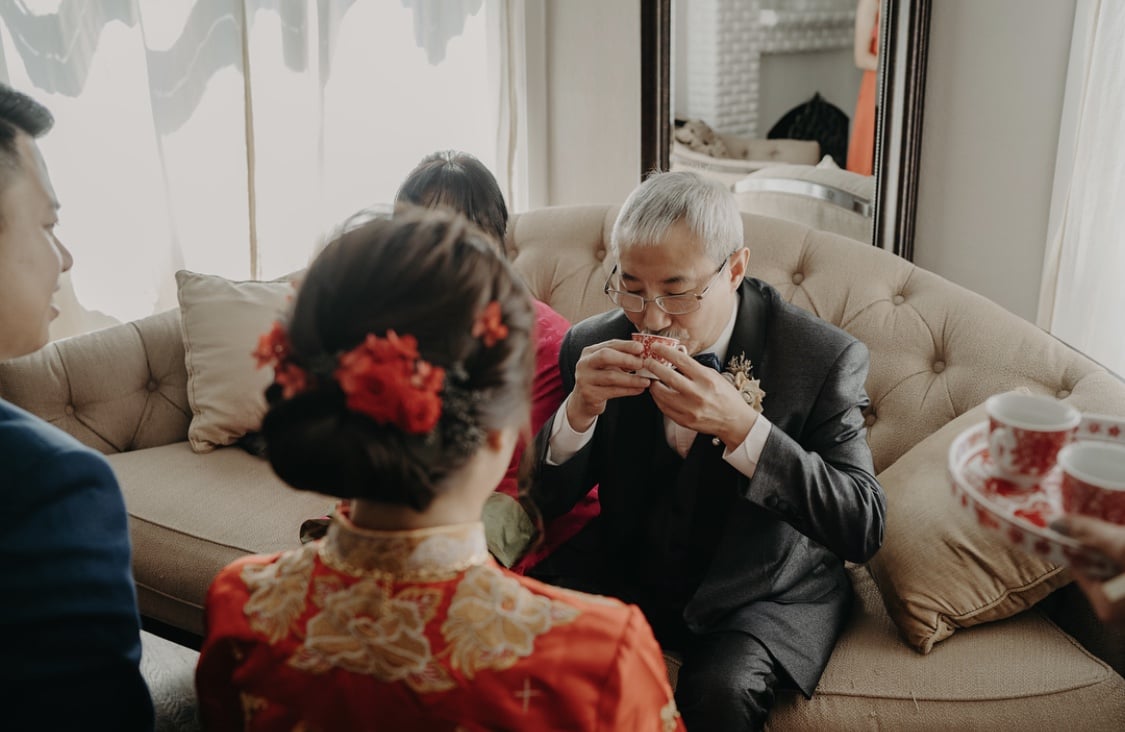
Image credit: @purpleashphoto
Traditional sweet teas used in the tea ceremony is brewed with ingredients like lotus seeds and red dates to bless the couple with many kids quickly. Another common ingredient used is longan, which has the meaning of dragon in Chinese to symbolise the blessing of having boys in the family.
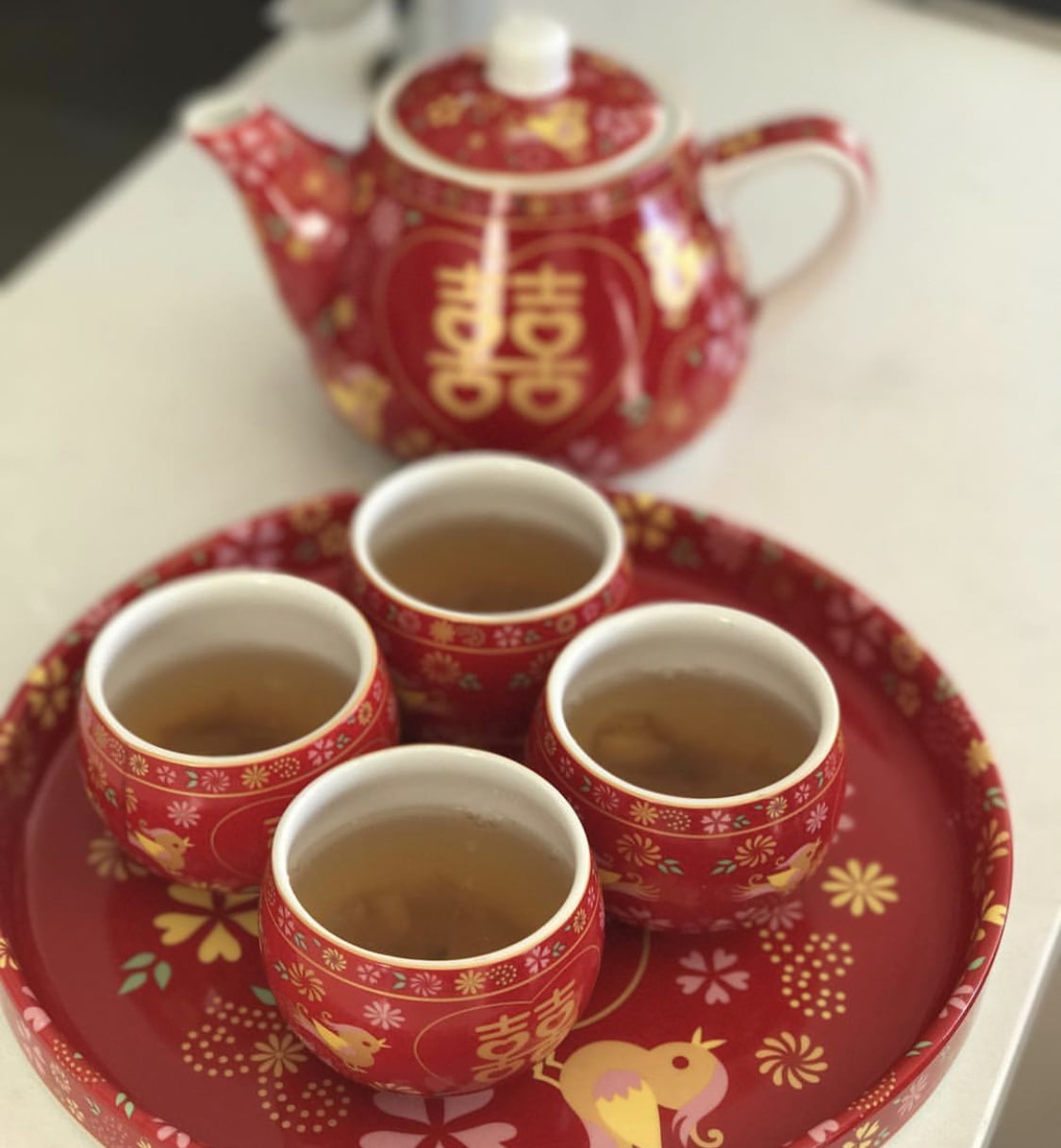
Image credit: @ms_yanx2
Starting at the groom’s home, the couple will serve tea and address family members by their formal titles while kneeling or bowing as a show of respect. The same will be done at the bride’s family home after she changes into the traditional Chinese wedding dress that’s known as the kua.
After the tea ceremony is completed, older and married relatives will give red packets to the pair as a form of well wishes and an official welcome into the family. Meanwhile, younger and single relatives have to serve the couple tea instead.
6. The groom goes through a gatecrashing with crazy tasks before getting to meet the bride

Image credit: @eventureshawaii
As the saying goes: Nothing worth having comes easy. As the bride is seen as a precious gem to her family, it’s a given that gaining her hand in marriage won’t be an easy feat. Accompanied by his bros to rally and support him, the groom must first complete a series of challenges set by enthusiastic bridesmaids during the gatecrashing in order to fetch his bride from her family home.
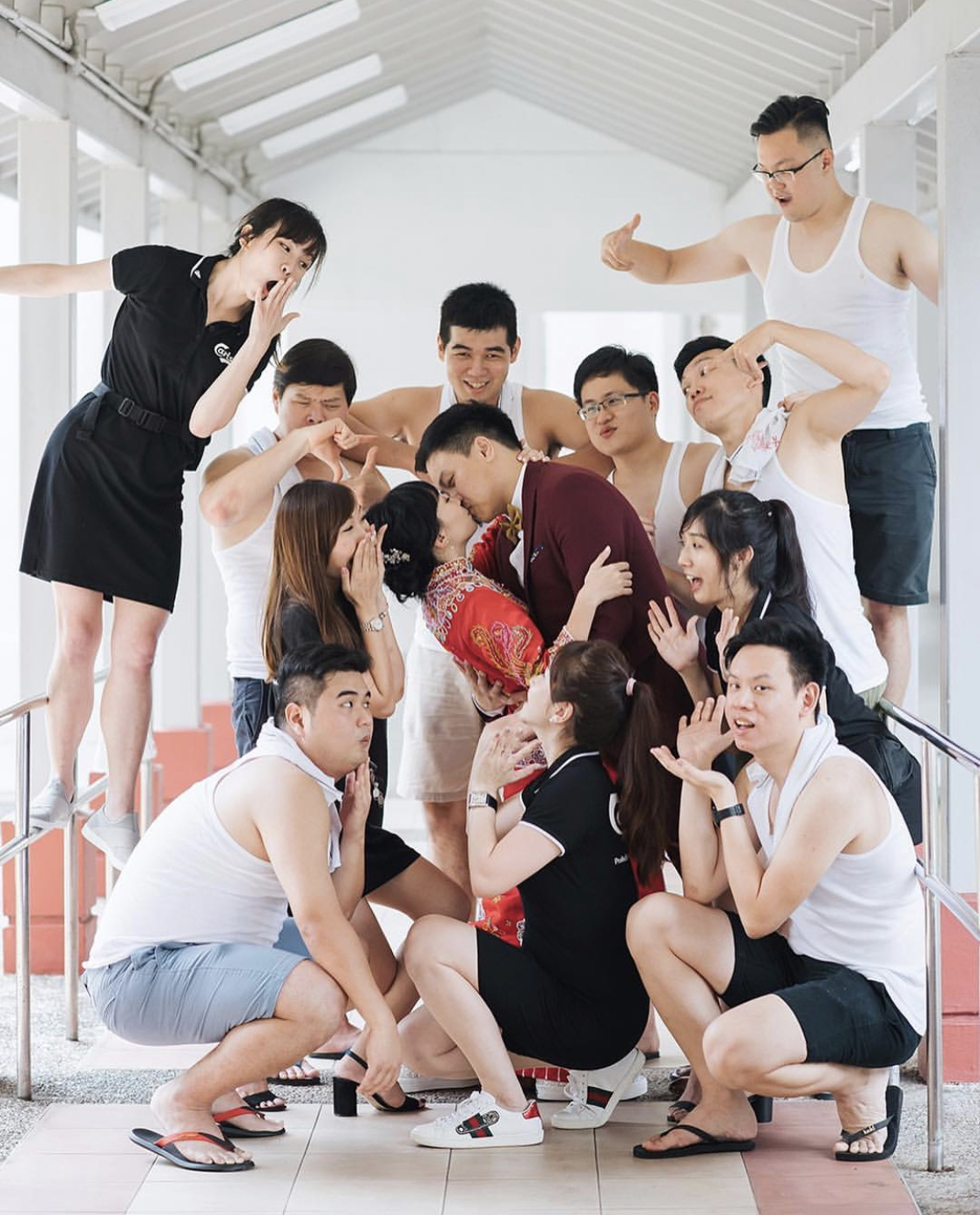
Image credit: @sharontws
Symbolising the ups and downs in every marriage, a weird concoction of the four flavours of sour, sweet, bitter and spicy must be downed by the groom. Other unique tasks for the groom include reciting and signing a contract to officialise his vows as a test of his commitment and sincerity, as well as haggling with bridesmaids on the red packet amount that they deem worthy for their efforts.
Fun fact: Unlike many traditional Chinese wedding customs that started in ancient China, gatecrashing originated from Hong Kong drama serials, with brides feeling heartened to know that their men are willing to go the extra mile for them!
7. The bride is sheltered with a red umbrella on the way to the bridal car to ward off negative elements

Image credit: @premierlove.ca
Following a successful gatecrashing, the bride must be sheltered with a red umbrella as she makes her way from her home to the wedding car. Beyond shielding her from the sun so she can stay glam on her special day, this is believed to ward off any negative elements or evil spirits.
Before setting off in the bridal car, the bride also has to throw out a red foldable fan through the car window as a means of leaving any negativity in the past as she begins a brand new chapter with her groom.
8. Guests have to bring 3-figure red packets to the wedding banquet
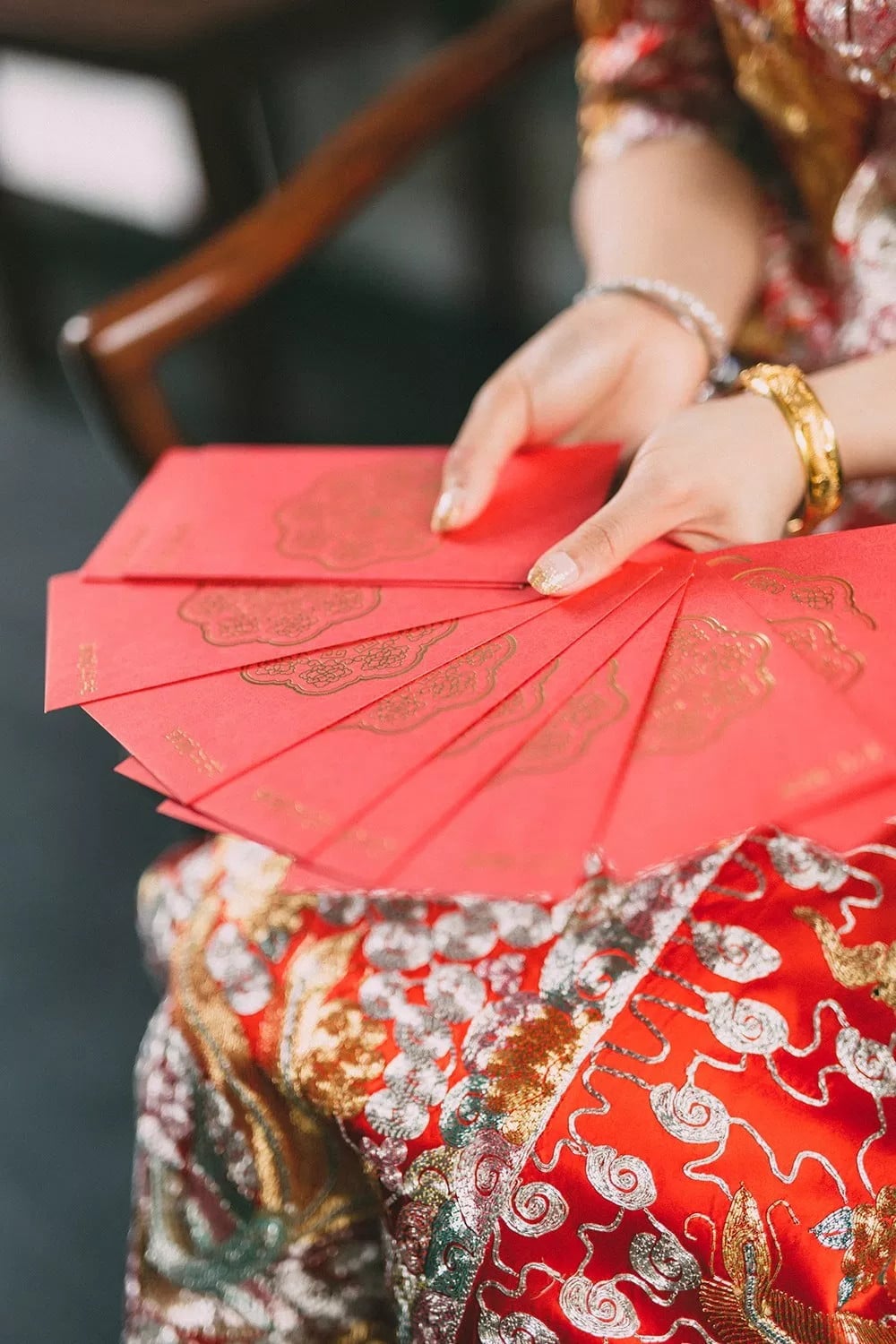
Image credit: @herman_peter
Red packets are given to the couple by the guests at the wedding banquet – not just as a form of blessing to the newlyweds, but also to cover the cost of their banquet seat.
A source of headache and confusion for most guests, the unwritten amount to fill each red packet with is at least 10% of the wedding table cost, which differs largely based on how atas the restaurant is and what day the wedding is on. Those who are closer to the couple tend to give a bigger amount too. But across the board, this is usually a 3-digit sum.
Ultimately, it’s best to refer to comprehensive online guides for hotel ang bao rates that’ll help you get the right amount!
Singapore’s Chinese wedding traditions
Traditions can often be seen as outdated in a modern city like Singapore, especially if you’re “forced” to go through the motions by your older family members while knowing absolutely nothing about them. Now that you know the true significance of these Chinese wedding customs, at least now you’ll understand why they matter so much to your folks or parents-in-law.
Check out our other wedding-related articles here:





